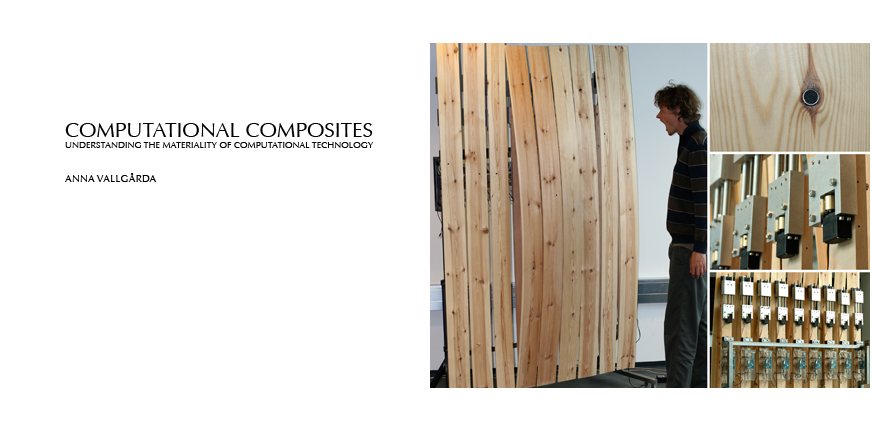Smart Textiles Design Lab Blog at The Swedish School of Textiles
Computational Composites
ABSTRACT
The problématique addressed in this dissertation is generally shaped by a sensation that something is amiss within the area of ubiquitous computing. Ubiquitous computing as a vision—as a program—sets out to challenge idea of the computer as a desktop computer as means to explore the potential o the new microprocessors and network technologies. But the understanding of the computer represented within this program poses a challenge for its own intentions. The computer understood as a multitude of invisible intelligent information devices confines the computer as means to solve well defined problems within specified contexts—something which rarely exists in practice.
Nonetheless, the computer will continue to grow more ubiquitous as moors law still withold and as it becomes ever cheaper. The question is how, and for what we will use it? How will it, for instance, be implemented in design and architecture and in what new directions we will take the technological developments? We need a new understanding of the computer to guide these developments as none of the previous withhold these new conditions and new oppertunities.
I propose that we begin to understand the computer as a material alonge any other material we would use for deisgn, like wood, aluminum, or plastic. That as soon as the computer forms a compositions with other materials it becomes just as approchable and inspiering as other smart materials.
I present a series of investigations of what this understanding could entail in terms of developing new expressional apperences of computational technology, new ways of working with it, and new technological possibilities. The investigations are carried out in relation to or as part of three experiments with computers and materials, later reffered to as PLANKS, copper computational composite, and Telltale. Through the investigations I show how the computer can be understood as a material and how it partake in a new material strand of materials whose expressions come to be in context. I uncover some of their essential material properties and potential expressions. I develop a way of working with them in a design process despite their complexity and non a priori existence and finally I argued how these investigations form both valid and valuable research results within the context of design research.
Vallgårda, Anna, 2009 “Computational Composites: Understanding the Materiality of Computational Technology” PhD dissertation, IT University of Copenhagen, Copenhagen Denmark [pdf]
January 4, 2011 | Filed under Dissertations.

The Swedish School of Textiles
All content © 2025 by Smart Textiles Design Lab Blog
